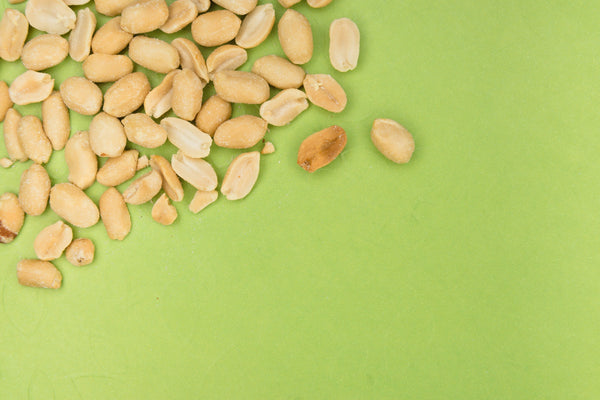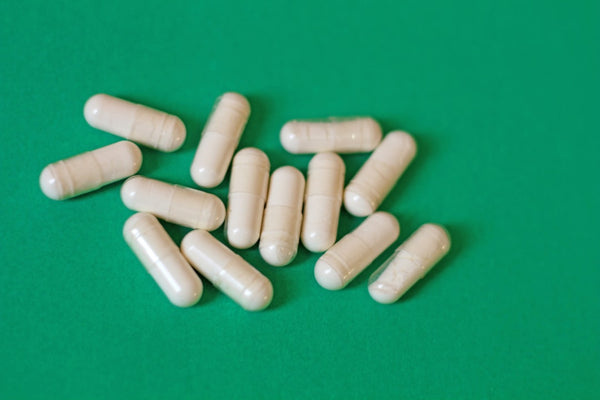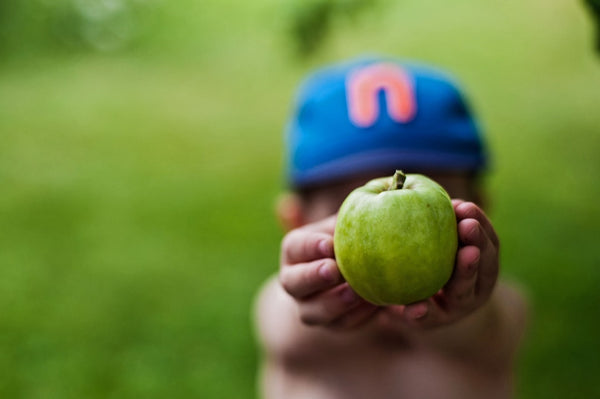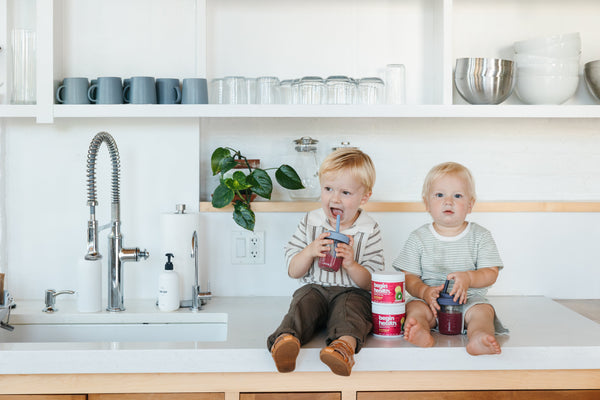Teach Kids About Composting —A Natural Lesson in Digestion
share this article
“Finished humus: the result of nature's recycling system at work.”
It might seem a little gross at first, but teaching kids how poop and food scraps become healthy soil—called humus—can be one of the most exciting and important lessons you give them.
Not only does this lesson show how nature recycles and is intelligently interconnected, but it also helps kids understand their own bodies, especially their digestion and gut health in relation to the world around them.
As parents, we work hard to teach our children how to eat well. But understanding where food comes from and where it goes afterwards helps complete the picture of health for our little ones.
Here at Begin, we’re really into the journey from poop to humus, because we know it's vital to gut health. We’re excited to tell parents how to teach this life cycle through fun, hands-on activities kids will love.
What Is Humus (and Why It’s Awesome)?
Humus (not to be confused with the tasty chickpea spread!) is the dark, crumbly, nutrient-rich material created when organic matter—like food scraps, leaves, and yes, poop!—fully and naturally decomposes into earth or soil.
Human poop, just like dog, horse, and cow residue, becomes soil. This kind of soil is packed with beneficial microbes, holds moisture, and helps grow strong, healthy plants.
When we make compost at home or use worm bins, the end result is humus. It’s dark, smells like fresh earth and is nature’s best fertilizer. But what’s even more amazing is that the composting process we see as worms turn food scraps into humus, is the same natural process that’s happening inside our kids’ bodies every day!
Composting occurs inside our human bodies as well, in just the same way we can see it happen to our food scraps!
The Digestion-Soil Connection: What Happens to Food and Poop
“Our bodies gut microbes and worms in compost bins work in similar ways—both turn food into fuel and waste into life.”
Let’s break it down in kid-friendly terms:
-
Food goes in. Kids eat apples, sandwiches, and snacks.
-
The gut breaks it down. Good bacteria in the gut help digest food and turn it into energy and nutrients.
-
What’s left becomes waste. Poop is the leftover stuff the body doesn’t need.
-
In compost, the same thing happens. Microbes and worms eat scraps and waste, break it down, and turn it into healthy humus.
Both the human gut and compost piles are full of microbes doing important work—breaking down food, recycling nutrients, and making life grow. The world inside is similar to the world outside us!
In fact, the better we feed our gut (with fiber-rich, whole foods), the stronger and more diverse the gut microbiota becomes—and the more effective our digestion.
Similarly, the better we feed a compost pile (with balanced, organic matter), the healthier the humus will be. The quality of life, whether in soil or in our bodies, depends on what we feed it.
How to Teach Kids About This Cycle Without the Ick Factor
“Make it fun—turn decomposition into a story of transformation.”
Kids love a good science mystery—especially if there’s a little mess involved. Use curiosity to your advantage with these fun, friendly approaches:
-
The Food Journey Story: Tell a silly bedtime story about a banana peel and a pile of poop who travel through compost land to become humus heroes.
-
Poop Patrol Game: When your child goes to the bathroom, use it as a teaching moment (with humor!) about how the body processes food.
-
Compost Detective: Compost at home. Let kids check on the compost bin each week to track how things are changing. Smell it, stir it, and spot new textures. They can imagine that what they see happening outside is exactly what’s happening inside their own little body.
-
Worm Watch Station: Start a worm bin and give the worms names. Let kids feed them food scraps and see how they turn waste into rich, black soil.
Explain and show kids that only natural, organic food decomposes well. Just like they’ll be able to tell from looking at a compost bin, Doritos or gold fishes don’t decompose as well as apple peels and other natural food scraps.
Let kids know the same happens inside their little gut. Natural foods break down easily, while synthetic foods are harder for gut bacteria to break down and digest.
As a fun perk to embark your family on its vermicomposting journey, the Begin Team got you 10% off on composting worms using code UJW10 at Uncle Jim's Worm Farm. Check it out! It’s so much fun!
The Science of Composting—Made Simple for Kids
-
Add food scraps and organic waste. This includes veggie peels, apple cores, eggshells, and even paper.
-
Let microbes and worms get to work. They eat and digest the waste, just like gut bacteria.
-
Heat builds up. The compost pile gets warm, which helps kill harmful bacteria.
-
Voila! Humus forms. After weeks or months, you get crumbly, dark soil that’s safe and healthy for plants.
“Let kids watch the magic happen with a see-through compost container.”
The more diverse and balanced the microbial community in the compost, the higher the quality of the humus—just like a diverse gut microbiome leads to better digestion and health outcomes.
Why This Matters for Gut Health
Here’s the coolest part: composting isn’t just about gardens. It teaches kids about their microbiome—the friendly bacteria that live in their gut and help them stay healthy. When kids understand how microbes work in compost, it becomes easier to:
-
Understand digestion
-
Appreciate healthy foods
-
Know why fiber (like fruits and veggies) feeds gut bacteria
-
Recognize how poop tells us what’s going on inside
By connecting the dots between waste, soil, and health, kids develop a deeper respect for their bodies—and the environment.
Parent-Friendly Ways to Get Started
-
Build a Compost Pile or Bin: Use a corner of your yard or a small container indoors. Involve your child in building and caring for it.
-
Label the Layers: Draw or paint signs that show the layers of compost—scraps, leaves, worms, and humus.
Hand-drawn compost signs made by kids (e.g., “Worm Zone,” “Decomposing!”).
-
Use Clear Containers: Let kids see decomposition in action with a clear plastic bin or jar.
-
Start a Poop & Soil Science Journal: Let your child draw what they see in compost, track what they eat, and notice how different foods affect their digestion.
-
Read Books on Composting: Try titles like Compost Stew, The Magic School Bus Meets the Rot Squad, or What Happens to Our Poop?
Fun Facts to Share With Kids
-
One teaspoon of healthy humus has more microbes than all the people on Earth!
-
Worms have five hearts and can eat half their weight in scraps every day.
-
Poop from herbivores (like cows and rabbits) is compost gold for gardens.
-
The more diverse your gut bacteria, the healthier your immune system is.
-
Healthy gut microbes can help create better humus when they’re part of safe, properly managed composting systems.
Bringing It Full Circle—Food, Poop, Compost, Soil, Health
Everything is connected—nature’s cycle of health, growth, and renewal.
Let kids see the entire cycle:
-
Eat real food →
-
Digest it with the help of gut bacteria →
-
Poop or scraps go to compost →
-
Compost turns to humus →
-
Humus grows new food →
-
And the cycle continues!
Kids who understand this cycle feel more connected to what they eat—and what happens afterward. It fosters mindfulness, health literacy, and eco-awareness all at once.
Summary: Gut Health Begins with Understanding the Whole Cycle
When kids learn how poop becomes humus, they gain more than just a fun fact. They understand how their bodies work, how soil supports life, and how to care for their health from the inside out. Composting becomes more than a chore—it becomes a window into digestion, nutrition, and environmental stewardship.
So go ahead—dig into the dirt, laugh about poop, and help your child grow their understanding of this fascinating (and very natural) cycle. Because healthy guts grow from healthy soil—and that starts with knowing how humus happens. And remember: the healthier your gut microbiota, the healthier your compost and humus will be, too.
















